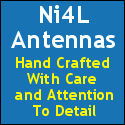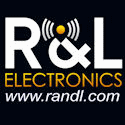Posts Tagged ‘Equipment’
 The Future of Emcomm
The Future of Emcomm
Here comes Starlink!
 I’ve been reading a number of reports from the areas affected by the two major hurricanes (Helene and Milton). The North Carolina experience is particularly interesting because people have experienced the loss of communication and electrical service for several weeks. I can imagine this same thing happening in other parts of the country, including my area.
I’ve been reading a number of reports from the areas affected by the two major hurricanes (Helene and Milton). The North Carolina experience is particularly interesting because people have experienced the loss of communication and electrical service for several weeks. I can imagine this same thing happening in other parts of the country, including my area.
There are two important technology disruptions showing up in North Carolina: satellite-based internet (Starlink) and mobile-phone-to-satellite (SMS) text messaging. Starlink is having a significant impact during this incident, while mobile phone satellite messaging is still emerging. Steve N8GNJ has some worthy thoughts on these topics in Zero Retires 173. Although I have served in many ARES/RACES deployments over the years, I don’t consider myself an expert in this area. I’d appreciate comments from Emcomm folks who have spent more time thinking about this.

Types of Emergency Communication
Most relevant emergency comms lump into 1) short-range comms (< 5 miles) between family, friends, and neighbors. 2) medium-range comms (50 miles) to obtain information and resources. 3) long-range comms (beyond 50 miles) to connect with distant family, friends, and resources.
- Short-Range Comms: This is the type of communication that is well served by mobile phones, except when the mobile networks are down. This is happening a lot in North Carolina. Lightly licensed VHF/UHF radios such as FRS and GMRS can be used to replace your mobile phone. Think: wanting to call your neighbor 3 miles away to see if they are OK or can provide something you need. (I have a few FRS/GMRS radios in my stash to share with neighbors. See TIDRadio TD-H3) VHF/UHF ham radio is, of course, even better for this, except the parties involved need to be licensed. (OK, you can operate unlicensed in a true emergency, but that has other issues. See The Talisman Radio.)
- Medium-Range Comms: This is a great fit for VHF/UHF ham radio using repeaters or highly-capable base stations. GMRS repeaters can also serve this need. These communications will typically be about situational awareness and resource availability in the surrounding area. For example, someone on the local ham repeater may know whether the highway is open to the place you want to drive.
- Long-Range Comms: Historically, this has been done by HF ham radio and a lot of emergency traffic is still handled this way. The shift that is happening is that setting up a Starlink earth station feeding a local WiFi network can help a lot of people in a very effective manner. Compare passing a formal piece of health-and-welfare traffic via ham radio to letting a non-licensed person simply get Wi-Fi access to their email or text messaging app. Hams are doing this, but many unlicensed techie folks have set up these systems and freely shared them with the public.
Mobile Satellite Messaging
Various providers now offer a basic text messaging capability using smartphones talking to satellites. Today, this capability is often limited to emergencies (“SOS”), and it is relatively slow. With time, this capability will certainly improve and basic satellite texting will be ubiquitous on smartphones. This will be great for checking in with distant friends and families, but it may not be that useful for Short Range and Medium Range comms. Someday, it might include voice comms, but in the near term, it is probably just text-based.
Evan K2EJT provides some useful tips based on his experience here in this video. However, he doesn’t address the Starlink capability.
Summary
While much of the public appreciates the usefulness of ham radio during emergencies, I am already hearing questions like “Doesn’t Starlink cover this need?” My view is that Starlink (and similar commercial sats) is very useful and will play an important emcomm role, but it does not cover all of the communication needs during incidents such as hurricanes, blizzards, wildfires, earthquakes, etc. Emcomm folks (ARES and RACES) will need to adapt their approach to take this into account.
Those are my thoughts. What do you think?
73 Bob K0NR
The post The Future of Emcomm appeared first on The KØNR Radio Site.
 Handie-Talkie or Walkie-Talkie?
Handie-Talkie or Walkie-Talkie?

In ham radio, we often use Handie-Talkie or HT to describe a compact, handheld transceiver. My first exposure to the term Handie-Talkie was when I first became a licensed radio amateur in 1977. While I was a student at Purdue University (W9YB), the absolute coolest VHF radio to have was the Motorola HT-220. Even a used one commanded a high price so they were out of my price range and I never owned one. These were 6-channel crystal-controlled transceivers…back then you had to set up the radio with the particular 2m frequencies you wanted to use. Because it was such an iconic radio, there are many HT-220 enthusiasts still around with websites with tons of useful information. See the HT-220 Page.
Motorola trademarked the name Handie-Talkie and used that nomenclature for many years with its line of portable radios. However, this trademark has expired, so now Handie-Talkie is a generic term.
The First Handie-Talkie
But the HT-220 was not the first Handie-Talkie, so I started poking around to find out how this name originated. Back in World War II, the SCR-536 was a portable “hand-held” transceiver developed in 1940 by Galvin Manufacturing (later Motorola, Inc.) I put “hand-held” in quotes because, by today’s standards, it was a Hand FULL. But most people consider the SCR-536 to be the first modern, self-contained HT transceivers. The Wikipedia article for the SCR-536 describes the radio quite well. The radio put out about 360 mW of RF power on 3.5 and 6.0 MHz (Oops, I mean 3500 to 6000 kilocycles) using Amplitude Modulation (AM). The circuitry relied on smallish vacuum tubes, creating quite a design challenge. Motorola has a page on its website that talks about the origins of the radio. IEEE Spectrum also published an excellent article: The SCR-536 Handie-Talkie Was the Modern Walkie-Talkie’s Finicky Ancestor. The January 2005 issue of QST has an interesting article by Gil McElroy, VE3PKD, A Short History of the Handheld Transceiver. It provides more history and insight to this fun topic.

The First Walkie-Talkie
A few years later (1942), a backpack portable radio was introduced, called the SCR-300. I always assumed that the backpack-style radio would have come first and the more compact radio SCR-536 would be later. (Actually, there were previous backpack radios, such as the SCR-194). This new backpack-style radio was referred to as a Walkie-Talkie. According to the manual, the SCR-300 was “primarily intended as a walkie-talkie for foot combat troops”. I suppose the emphasis was on how you can walk and talk, with a radio on your back.

This article: SCR-300 WW2 Radio Backpack: The “Walkie Talkie” That Shaped the War describes this radio as a game-changer for frontline troops. The radio weighed a heavy 35 pounds, and used Frequency Modulation (FM) on 40 to 48 Megacycles.
Of course, with technology development, there is always the question of “who was first”? The SCR-194 that predated the SCR-300 might be considered the first walkie-talkie. However, the SCR-300 and the SCR-536 seem to get all of the glory, probably due to their impact on the war effort. However, take a look here if you want to dig deeper: TALK the WALK or WALK the TALK: Who actually developed the first Walkie-Talkie?
This article describes the development and use of the SCR-300 and mentions some of the limitations of the SCR-194: SCR-300 History Development Employment and Details Final Draft This is a big file with many photos but worth reading if you have the time.
Today’s Terminology

Fast forward to today and we see that the HT and Handie-Talkie nomenclature is common in the amateur radio world. The photo to the left shows a modern 2m/70cm HT, the Yaesu FT-4X.
The term “walkie-talkie” has morphed to something quite different and is used generically to describe a handheld radio. This term covers a wide range of radios, from low-cost Family Radio Service (FRS) radios to higher-quality professional radios. This is quite different from the original Walkie-Talkie, a backpack radio weighing 35 pounds.
The military has progressed with improved communication technology, still using backpack-style radios, now referred to as manpack radios. These are amazing radios that pack extensive capability into a relatively small package. The AN/PR-158 shown below covers 30 to 2500 MHz in frequency, satellite comms, advanced encryption, narrowband and wideband modes: AM, ASK, FM, FSK, PSK, CPM, GMSK, and plenty more. This radio weighs 12.7 pounds with the battery installed, so a lot lighter than the old SCR-300.

So that’s a quick tour through some radio terminology along with a bit of historical perspective. I discovered there is an infinite supply of information out there on the history and technology of military radios. If you want to dig deeper, go for it!
73 Bob K0NR
The post Handie-Talkie or Walkie-Talkie? appeared first on The KØNR Radio Site.
 Common Ham Shack Radio Configurations
Common Ham Shack Radio Configurations
Amateur radio transceivers have improved dramatically over the decades and they pack a lot of capability into relatively compact radios. In this post, we will take a look at the typical configurations and how they may impact setting up a flexible amateur radio station today. This discussion is focused on currently available new gear, with 50 to 100 watts of RF power.

The most common HF radio configuration used to be a 5-band model that offered CW, AM, and SSB on 80 meters, 40 meters, 20 meters, 15 meters, and 10 meters. In the early 1980s, the WARC bands were added (named for the World Administrative Radio Conference of 1979) that authorized these new bands. The WARC bands are 30 meters, 17 meters, and 12 meters. These attractive new bands were soon added to the standard HF rig. Most HF radios include 160 meters (actually a Medium Frequency or MF band) on the low end and a general coverage receiver for 150 kHz to 30 MHz. So these days, the typical HF transceiver handles 9 bands and many different modes. (Actually, most of these rigs now include 6 meters, more on that later.)
Dominant Design
In the world of product development, the concept of a dominant design often emerges. This generally accepted approach dominates a particular market and is considered the standard way of doing things in a particular product category.
From Wikipedia:
Dominant design is a technology management concept introduced by James M. Utterback and William J. Abernathy in 1975, identifying key technological features that become a de facto standard. A dominant design is the one that wins the allegiance of the marketplace, the one to which competitors and innovators must adhere if they hope to command significant market following.
We will see that most ham radio gear conforms to the concept of a dominant design. That is, certain product configurations become standard, especially in terms of frequency bands and modes. Manufacturers still innovate by adding new features in an attempt to differentiate and obtain competitive advantage but the basic capabilities are standard. The dominant design for HF transceivers is the 100-watt radio that covers 160m through 6m.
VHF/UHF Radios
For VHF/UHF, the situation is a bit more scattered. 2-meter FM is the most popular band and back in the olden days, it was common to just have a single-band 2m FM rig in the shack. To cover 70 cm FM, a radio ham needed a second radio but later dual-band radios showed up that covered 2m and 70 cm. Today, the dominant design for VHF/UHF is the dual-band FM transceiver (typically 50 watts of output power) and there are so many of these available I won’t attempt to list them.

VHF FM is the utility mode for amateur radio and many hams are just fine using FM (or one of the digital voice modes) on VHF/UHF. Those who want to stretch the limits of VHF/UHF operating usually go for all-mode rigs that offer CW, SSB, FM and various WSJT digital modes. Again, back in the olden days, a VHF+ enthusiast would acquire single-band all-mode radios for the bands of interest. A ham really into VHF/UHF might have single-band radios for 6m, 2m, 1.25m, and 70 cm stacked up in the ham shack. The 1.25-meter band has always been a bit neglected in terms of equipment availability because that band is not available worldwide. Transverters are another option to get all-mode capability on these bands using an HF transceiver to transvert to a single VHF or UHF band.
HF Plus 6 Meters
One important addition to the standard HF rig is that the 6m band is often included. Now this may not sound quite right because we all know that 6 meters is a VHF band, so what is it doing in an HF radio? It actually makes a lot of sense because a lot of 6-meter operating is similar to HF. (6 meters is the VHF band that often emulates HF.) There is FM activity on 6 meters but most of the action is on SSB, CW, and, yes, FT8. In fact, FT8 is seeing a lot of action on the band, so if you want to participate on 6m, you should consider that mode. Anyway, this all means you probably need an all-mode radio for 6 meters, and having it as a bonus band on an HF radio without a huge increase in cost is a good approach. (These radios usually support FM for the 10m and 6m bands.)

All-Band All-Mode Rigs
Another common transceiver configuration is the All-Band All-Mode radio available from several manufacturers. A great example of this type of radio is the Yaesu FT-991A, which includes 160m through 10m plus 6m, 2m, and 70cm. Once again, 1.25m is passed over. This radio configuration has a lot of appeal because it covers pretty much everything with all-mode capability. (It also has a built-in sound card and USB connection which is handy for the WSJT digital modes.)

The FT-991A is a good choice for the ham shack or operating portable but it is a bit large for a mobile installation. Icom offers the IC-7100 in a mobile form factor, with a novel sloping detachable front panel. Yaesu used to offer mobile products in this space such as the very popular FT-857D transceiver. However, the FT-857D is no longer made and its apparent replacement is the FT-981 which has only the HF + 6m bands.

The main disadvantage of this type of radio is that it can only do one frequency at a time. Often, I want to be able to work HF while still monitoring the local 2m FM repeater and simplex channels. Or maybe I’d like to keep listening for 6 meter activity while working 2m SSB, especially during a contest. However, this type of radio is my first choice for portable operating for Parks On The Air because it covers all the bands and modes. This article is focused on 100-watt radios but note that there are all-mode all-band QRP radios such as the IC-705.
All Mode VHF/UHF Radios
One interesting and disappointing trend that has emerged is the distinct lack of VHF/UHF all-mode transceivers. There is only one such radio on the market today, the Icom IC-9700 which does all modes on 2m, 70cm, and 23 cm (1.2 GHz). It seems that Icom decided that if they are going to offer a VHF/UHF radio, they would go full-featured and include 23 cm. Note that if you pair this radio with an HF plus 6m radio, you can cover all the popular bands with all modes using two radios. This radio is not inexpensive, currently selling new for about $1800.

I suppose we can declare this the dominant design for VHF/UHF but it is a lone product in this space. I have written previously about an all-mode dual-band portable radio for 2m/70cm that I desire. I own an IC-9700 and like it a lot but I would give up the 23 cm band to have a radio that is more portable and less expensive. I suspect that Icom is happily making good profit margins on the IC-9700 given that they have essentially no competition in this space. Yaesu has the technology to do something here but has been content to let the FT-991A cover the all-mode 2m/70cm space for them.
Common Ham Shack Setups
Now let’s take a look at some common ham shack configurations that consider these different radio configurations. When I say “ham shack” that may include your mobile or portable station, too.
Setup 1: FM VHF/UHF Only A Technician might decide they want to focus on 2m and 70cm, with FM being just fine for working simplex and repeaters on those bands. A basic dual-band FM transceiver will handle this nicely, see A VHF FM Station at Home. For some hams, their dual-band handheld radio serves this purpose.
Setup 2: All-Band All-Mode Transceiver As mentioned earlier, All-Band All-Mode radios cover the most popular ham bands and modes with one rig. They are a good way to get one radio that does everything. The disadvantage is not being able to monitor VHF/UHF at the same time as working HF.
Setup 3: HF/6m radio plus 2m/70cm FM radio This is a very common configuration for a ham shack because it separates the HF bands (and 6m) from the 2m/70cm FM operating. The FM rig can be left monitoring your favorite repeater or simplex frequency while you chase DX on 15 meters. If your 2m/70cm needs are basic, the FM radio might even be a handheld transceiver.
Setup 4: HF/6m radio plus all-mode VHF/UHF radio This is the setup for the ham that wants to cover all the bands and be able to do all modes on VHF/UHF. The band/mode coverage is similar to Setup 2 but we have two radios available which provides the monitoring flexibility associated with Setup 3. This configuration allows for having a really good HF/6m radio and a really good VHF/UHF radio.
Conclusions
The ham radio transceivers being offered tend to follow certain patterns consistent with the dominant design theory. If you buy a modern HF transceiver, you will get all of the HF bands plus the 6m bonus band. These radios vary in features and performance but they all have good band/mode coverage. The VHF/UHF situation is perhaps not quite as simple. The standard 2m/70cm FM rig is a popular option but is limited to FM only. The VHF/UHF weak-signal enthusiast does not have many choices beyond the IC-9700, which may represent an opportunity for another manufacturer to jump in with a more cost-effective 2m/70cm all-mode radio. The 1.25m band continues to be neglected and may be a good additional band to add to 2m/70cm radios.
That’s my analysis. What do you think?
73 Bob K0NR
The post Common Ham Shack Radio Configurations appeared first on The KØNR Radio Site.
 An Easy HF Antenna
An Easy HF Antenna
When radio amateurs get ready to put an HF station on the air, they often have questions about what antenna to use. The good news is that there are many options to choose from. The bad news is that there are too many options to choose from. It can be overwhelming. This post describes an antenna I just installed that is easy to put up and works well.

Having 30-foot tall pine trees on our property, my usual approach for HF antennas is “wires in the trees.” I have several ropes strung up over these tall trees so that I can raise and lower wire antennas as needed. These ropes were installed using a slingshot to launch a fishing line over the top of the tree, and then pull up a lightweight rope.

End Fed Long Wire
The antenna is the EFLW-1K from MyAntennas.com, which is an End Fed Long Wire Antenna. (This should not be confused with an End Fed Half Wave antenna.) This antenna is intentionally cut to not be a resonant length on any of the bands. The 9:1 UNUN transforms the high impedance at the end of the wire down to something closer to 50 ohms. The match is not perfect so an antenna tuner is required to cover all of the bands. MyAntennas offers this antenna with different lengths of wire, with longer wires required to support the lower HF bands. I purchased the 53-foot version but decided to shorten the wire. My interest is working 20 meters and higher and I wanted the antenna to be mostly vertical, so I shortened the wire to about 30 feet. The MyAntennas products are good but any 9:1 UNUN on the end of a wire will work.
An endfed antenna like this needs some kind of counterpoise to balance out the antenna operation. Many people have written about this and there are many different approaches. The MyAntenna UNUN has a connector intended to support adding a short length of counterpoise wire. A decent length of coaxial cable lying on the ground can function as this counterpoise and that’s what I decided to use. I have a 50-foot length of LMR 400 connected to this antenna, lying on the ground.

I also added an inline isolation transformer to minimize the common mode currents getting back to the transceiver. I don’t know that this is required but I had one available so I used it. The antenna has 50 feet of LMR coax to the inline transformer and then another 25 feet of RG-8X to the transceiver. The internal antenna tuner in my Icom IC-7610 handles this antenna quite well, tuning up on 20m, 17m, 15m, 12m and 10m. This means I can instantly switch between the bands and be ready to go.
I’ve been running SSB, FT8 and FT4 on this antenna, working many stations in all regions: Europe, Asia, Oceania, Africa, North and South America. Conditions are great and I keep telling newer folks: now is the time to be on HF! This basic antenna is a great way to get on the air and work some DX.
73 Bob K0NR
The post An Easy HF Antenna appeared first on The KØNR Radio Site.
 Improved IC-705 SOTA/POTA station
Improved IC-705 SOTA/POTA station
This past year, Joyce/\K0JJW and I did quite a few Summits On The Air (SOTA) and Parks On The Air (POTA) activations, often as part of an RV camping trip. During this time, we made some improvements to our portable gear. For SOTA, we primarily use the VHF/UHF bands but we have been sprinkling in a bit more HF activity. For POTA, we often don’t have a Height Above Average Terrain advantage, so we definitely use the HF bands.

Our main goal was to have a backpack portable station for SOTA and POTA that can cover HF through 70 cm, on the most popular bands/modes including CW, SSB, FM and FT8.
Using The IC-705

The Icom IC-705 is a great transceiver for covering most HF, VHF and UHF bands. With an external battery, the transceiver puts out 10 watts of RF power. (This is a bit less than the 50 watts from our Yaesu FT-90, which is our default choice for 2m and 70 cm SOTA.) We have accumulated a number of Lithium Iron Phosphate batteries from Bioenno. They are all set up with PowerPole connectors and are easily interchanged. See a previous post, My SOTA Battery Journey.
Arguably the biggest weakness of the IC-705 is the lack of an internal antenna tuner for the HF bands. Of course, you can operate without a tuner by making sure your antenna is always 50 ohms. I find that limiting, especially under portable conditions where the antenna configuration might be compromised. Also, some common end-fed antennas that cover multiple bands are not a good match for all bands. There are external automatic antenna tuners available for the IC-705, so initially those looked like a good solution. Then I remembered that I had a small MFJ-902 Travel Tuner that could do the job. The MFJ-902 is a classic T-network with two variable capacitors and one variable inductor. I gave it a try and was impressed with how easy it was to tune using the SWR meter of the IC-705. This thing is simple and it works.

The rear panel of the tuner has two SO-239 connectors, one for the transceiver and one for the antenna. I put a BNC adapter onto the transceiver port and used a short BNC cable to connect to the IC-705.


The Travel Tuner is compact and not very heavy, so it works out well for backpack portable use. It can handle up to 150 watts, which is overkill for the IC-705 but it may come in handy when used with a higher power transceiver. Still, I am on the lookout for an even more compact (probably lower power) manual antenna tuner.

We have collected a variety of HF antennas, focused mostly on 20 meters and higher. These are typically end-fed, including single-band half-wave designs as well as multiband random-length antennas. These are used in the classic SOTA configuration with one end of the wire supported by a lightweight fishing pole and the coax connection on the ground, fed by a 25-foot length of RG-8X coaxial cable.
FT8 Solution
With the popularity of FT8 on the HF bands as well as 6 meters, I figured we should include that mode in our portable kit. My first thought was to use a compact Windows computer running the standard WSJT-X software. Ultimately, I chose the SDR Control app for the Apple iPad (by Marcus/DL8MRE), which supports specific Icom radios. The iPad connects to the IC-705 via its WiFi connection, which simplifies the connection/cabling challenge. The SDR Control app does cost $49.99, so it is not your inexpensive iOS app but I have found it to be worth the price. Because this app is focused only on iOS and certain Icom radios, it is well-tuned to be a no-fuss solution. I am currently using the app only for FT8 but it has other features and modes for me to explore.

The Powerwerx PWRbox is shown in the photo above, which we often use for operating POTA. (This box is a bit heavy for hiking.) The PWRbox holds a 20 Ah battery as described here. Also shown in the photo is a handy little stand for the IC-705, the NEEWER Folding Z Flex Tilt Head. It does a great job of holding and stabilizing the radio at a variety of angles. (Hat tip to Kyle/KD0TRD.) It is also a little heavy for backpack portable, so it usually gets left behind on a hike.

For a protective case for the IC-705, we use the Maxpedition 12-Inch X 5-Inch Bottle Holder. I’ve seen other IC-705 users recommend it and OH8STN mentioned it on his blog. At first glance, the case seems a bit large but this provides enough room inside to stow a small Bioenno battery and other accessories. The side pouch is a good place for storing the microphone and power cord.
Wrap Up
This post shares some new equipment configurations we are using for SOTA and POTA, mostly focused on the IC-705. I really like that radio for portable ops as it is the best solution for operating HF through UHF. The SDR Control software on an iPad has also turned out to be a win for us.
What are you using for your portable station?
Do you have any tips or other operating ideas?
73 Bob K0NR
The post Improved IC-705 SOTA/POTA station appeared first on The KØNR Radio Site.
 KB1HQS Arrow Antenna Mods
KB1HQS Arrow Antenna Mods
Stuart/KB1HQS has been experimenting with various modifications of the Arrow II antennas. Recently, he put together a video of the various mods, well done and interesting:
Ultimate Arrow Antenna Modifications
I am a big fan of the Arrow II style antennas for VHF SOTA. Initially, I used the dualband 2m/70cm antenna for satellite work as well as mountaintop activity. This started before SOTA was even a thing, as I hiked in the Colorado mountains and made radio contacts just for fun. These days, we normally carry the 2m-only version of the antenna, with split boom and 3 elements. My personal seamstress (Joyce/K0JJW) worked up a really nice rollup case for it. Sometimes, we’ll take along a separate 5-element 70 cm Yagi, which can remain fully-assembled and strapped onto my pack.

All antennas are a compromise between cost, size, weight, performance, convenience and durability. I have found that the 3-element Yagi from Arrow fits my needs really well. I have not been motivated to modify it. The Arrow antenna has a gain of about 6 dBd and is 37.5 inches long. We handhold the antenna and that is about as big/long as I’d like to hold. I am still in search of a higher-gain antenna for those special situations when I know that a few more dB of gain could make a difference. I’ve not really found anything I like. A longer boom would likely require a mast and, therefore, a guy system, which adds more weight and complexity.
Antennas are a never-ending source of options and experimentation, so go out and try something new.
73 Bob K0NR
The post KB1HQS Arrow Antenna Mods appeared first on The KØNR Radio Site.
 Checking Out The KT-WP12 Transceiver
Checking Out The KT-WP12 Transceiver
I’ve been interested in the idea of a microphone-centric radio and wrote about it here: How About a Mic-Centric Mobile Transceiver? Shortly thereafter, I discovered that QYT has introduced a VHF/UHF ham rig that has the display and controls in the microphone (Model KT-WP12).
You may want to watch the video by Tech Minds, which does a good job of introducing the radio.
I was very keen on trying this radio out, so I purchased one, paying about $110.
On the Bench
First, I did some bench tests to check the basic performance of the radio. The receiver sensitivity, transmit frequency and FM deviation all looked very good. The one specification that was disappointing was the RF power output. On the 2m band, the output power was 20.6 W, while the 70cm band was 15 W. The specification for the radio is 25 W. The power was measured using an HP 8920A RF Communications Test
I’ve noticed this on other radios from Chinese manufacturers: the basic specs of the radio check out, except the RF power level is low.
User Interface
As you might expect, cramming all of the controls into the microphone is a challenging user interface design. I spend quite a bit of time playing with the radio at home before actually using it on the air. Overall, I found the user interface to be acceptable, but several areas that should be improved.
QYT relies on the menu system to provide control of many of the settings. This is similar to the various Chinese handhelds where you push the MENU button to access the menus, followed by UP/DOWN to sequence through the menus, followed by MENU to access the specific setting. Then the UP/DOWN buttons choose the value of the setting and another push on MENU to accept it. The volume control setting is buried in this menu system, which seems like a poor choice. Fortunately, Mick/M0VMK pointed out that the volume can also be set by enabling the monitor feature (big button on the top of the mic) and hitting UP/DOWN.

This design depends too much on the menu system. A few user-defined buttons would be a real help. This radio could benefit from a serious redesign using User-Centered Design.
This radio has one receiver but allows for three independent frequencies to be displayed simultaneously. There is a scanning mode that tries to emulate a multi-receiver radio. This too is all too common with the Chinese radios…somehow they have it in their heads that this adds value for the user. My experience is that it mostly confuses the user. Most users would be better served with a single frequency display, supplemented with dual-watch and scanning capability.
You probably won’t be surprised that the user manual is terrible, also common with Chinese manufacturers, but this one is particularly bad. Same with the programming software…it mostly works (I had a few crashes) but it is poorly written.
On The Air (SOTA)
I was very interested in trying out this radio for Summits On The Air (SOTA) use. The idea is that the radio can be stuffed into a fanny pack, with the microphone, speaker, display, and controls in your hand.

The basic concept of holding everything in the palm of my hand worked out quite well. The display was visible in bright sunlight, the speaker audio was clear, and the microphone worked great. I made a number of SOTA contacts and received good signal reports. I held the microphone in one hand and pointed the 3-element Yagi antenna with the other hand. (Joyce/K0JJW assisted with logging and we took turns working the SOTA chasers.)
As soon as I fired up the radio, I heard interference on the 2m band, not very strong but noticable. It sounded like it was coming from an FM broadcast station. Pointing the Yagi antenna in the direction of the FM station on the adjacent mountain seemed to confirm the source. I did not hear any interference on the 70cm band. I’ve operated from this SOTA summit before and have not noticed any interference with other equipment, including Yaesu handhelds. Also, I switched to my Yaesu FT-90 and the broadcast station was not heard. As various people have suspected, this indicates that the receiver in the QYT is not very robust in terms of rejecting off-channel signals. Of course, this is an anecdotal report, not based on bench measurements.

I also encountered an anomaly where after my transmission, the radio did not revert back to receive quickly. There was a few seconds where no audio was coming out of the transceiver. This caused me to miss a few responses to my CQ call. This issue requires some additional investigation. It may have just been operator error on my part. However, I suspect that the radio was probably locking onto another frequency but I am not sure (see previous comments about the three frequency scanning mode). So file this issue under “stay tuned for more information.”
Note that I did not use the radio very much on repeaters, focusing on SOTA simplex operating with no transmit offset or CTCSS.
Conclusion
On the positive side, I really like the microphone-centric approach that this radio uses. The user interface can be improved but it is good enough.
The two big limitations of this radio are 1) low RF power output and 2) weak off-channel receiver performance. Now you might say that the RF power is not off by that much but my interest is having a SOTA radio that greatly exceeds the power of a typical 5 W handheld. On the 70 cm band, this radio only put out 15 W, so only 4.7 dB better than a handheld. The poor receiver performance will tend be an issue on summits that have radio installations nearby. In some cases, this can completely prevent a VHF SOTA activation.
I will probably use this radio again for SOTA activations but I’ll be bringing along a backup rig, just in case.
The post Checking Out The KT-WP12 Transceiver appeared first on The KØNR Radio Site.












